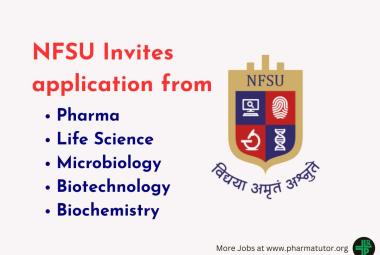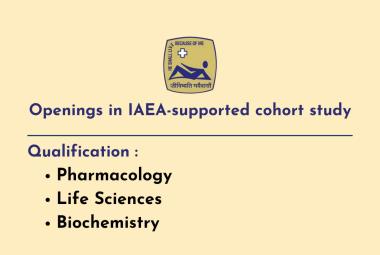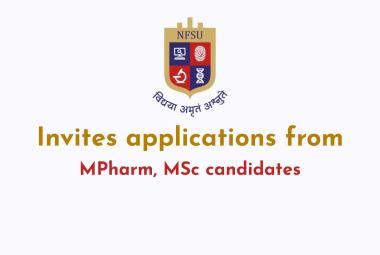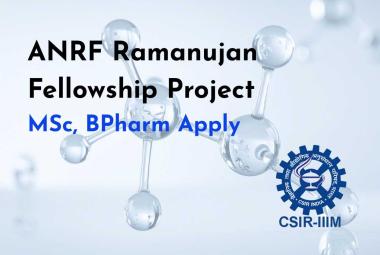ABOUT AUTHORS:
Anup Megotia*, Meenu Nagpal, Upendra K Jain, Varun
Dept. of Pharmaceutics, Chandigarh College of Pharmacy,
Landran, Mohali-160065
*megotiaanup@rediffmail.com
ABSTRACT
While rapidly disintegrating tablets do not necessarily ensure fast bioavailability, slowly disintegrating tablets almost always assure slow bioavailability. Drug release from a solid dosage form can be enhanced by addition of suitable disintegrants. Super disintegrants are effective in lower concentrations when compared to conventional disintegrants offer significant improvements over them. The disintegrants may employ any of the following mode for disintegration or a combination of them: by capillary action or wicking, by swelling or due to deformation. The disintegrant activity may be affected by several factors like molecular structure, compression force, excipient activity etc. The major superdisintegrants used today include sodium starch glycolate, croscarmellose sodium, crospovidone and polacrilin potassium.
Reference Id: PHARMATUTOR-ART-1992
INTRODUCTION
Disintegrant is the term applied to various agents added to tablet granulation for the purpose of causing the compressed tablet to break apart (disintegrate) when placed in an aqueous environment. Disintegrants constitute a group of materials that, on contact with water, swell, hydrate, change in volume or form, or react chemically to produce a disruptive change in the tablet1. Ideally, it should cause the tablet to disrupt, not only into the granules from which it was compressed, but also into powder particles from which the granulation was prepared2. Most commonly tablets are intended to be swallowed whole and to disintegrate and release their medicaments rapidly in the gastrointestinal tract (GIT). In more recent years, increasing attention has been paid to formulating not only fast dissolving and/or disintegrating tablets that are swallowed, but also orally disintegrating tablets that are intended to dissolve and/or disintegrate rapidly in the mouth. The task of developing rapidly disintegrating tablets is accomplished by using a suitable superdisintegrants. Superdisintegrants are more effective at lower concentrations with greater disintegrating efficiency and mechanical strength3.
Mechanism action of disintegrants:
1. By capillary action or wicking
2. By swelling
3. Due to deformation
Capillary action / Wicking: Disintegration by capillary action is always the first step. Tablet porosity provides pathways for the penetration of fluid into tablets, the fluid penetrates into the tablet and replaces the air adsorbed on the particles, which weakens the intermolecular bond and breaks the tablet into fine particles. For these types of disintegrants, maintenance of porous structure and low interfacial tension towards aqueous fluid is necessary which helps in disintegration by creating a hydrophilic network around the drug particles.2,4 E.g. Crospovidone, Croscarmellose
Swelling: Perhaps the most widely accepted general mechanism of action for tablet disintegration is swelling. For swelling to be effective as a mechanism of disintegration, there must be a superstructure against which the disintegrant swells. Swelling of the disintegrant against the matrix leads to the development of a swelling force. By swelling in contact with water, the adhesiveness of other ingredients in a tablet is overcome causing the tablet to fall apart17 . Tablets with high porosity show poor disintegration due to lack of adequate swelling force. On the other hand, sufficient swelling force is exerted in the tablet with low porosity. It is worthwhile to note that if the packing fraction is very high, fluid is unable to penetrate in the tablet and disintegration is again slows down.3,4,7 Eg. Sodium starch glycolate
Due to deformation: Hess had proved that during tablet compression, disintegrated particles get deformed and these deformed particles get into their normal structure when they come in contact with aqueous media or water. Due to high compaction force in case of tabletting the elasticity of disintegrant is deformed to plasticity with energy rich potential. When these tablets are exposed to aqueous environment, the energy potential of deformed starch grain will be triggered to cause disintegration Occasionally, the swelling capacity of starch was improved when granules were extensively deformed during compression.4,7 E.g. starch
Factors affecting Disintegration
Particle Size
Both the rate and force of disintegrant action are dependent upon the particle size of the disintegrant. Smallenbroek, Bollhuis, and Lerk found that starch grains having relatively large particle sizes were more efficient than the smaller particle size grades. This is probably because the continuous hydrophilic network of disintegrants is more efficiently accomplished by the bigger particles. Also, Rudnic et al. found that coarser grades of crospovidone (50–100 mm, Grade B; 50–300 mm, Grade C) were more efficient than the finer particles (0–15 mm, Grade A). Results for the other disintegrants, Amberlite IRP88_ and potato starch, support that coarser particle sizes allow more efficient disintegration than finer particles. For disintegrants that swell extensively, such efficiency can be explained by the observed force development.
Compression force
Compression force affects disintegration time in different ways. First, it governs the penetration of dissolution fluids into the matrix by controlling the porosity of the compact. Low compression force can lead to relatively high tablet porosity and can allow rapid penetration of water. However, it has often been observed that tablets containing starch exhibit disintegration times that tend to pass through minimum as compression force increases. At low compression forces, any possible swelling or deformation recovery that may take place may be more or less accommodated by the porosity, whereas at intermediate compression forces, a maximal disintegrating effect may develop. At high compression forces, fluid penetration may be impeded by a further reduction of porosity while particle deformation of the disintegrants becomes more important.16
Molecular Structure
Disintegrants can vary in molecular structure based on how they are manufactured or processed. Corn starch, for example, contains different ratios of two sugar fractions, amylose and amylopectin. Schwartz and Zelinske concluded that the linear polymer, amylose, was responsible for the disintegrant properties associated with starch, whereas the branched polymer, amylopectin, was responsible for the gummy property. Varying the amylose to amylopectin ratio did not affect the porosities of the resulting tablets. Rudnic, Kanig, and Rhodes evaluated the effect of crosslinking and carboxymethyl substitution in sodium starch glycolate and concluded that the swelling of the disintegrant was largely inversely proportional to the degree of cross-linkage. Swelling also was inversely proportional to the level of substitution, but to a lesser degree. Shah, Bekersky, and Jarowski found that carboxymethyl cellulose having high molecular weight and low levels of carboxymethylation was best for tablet disintegration.
Excipients
Effect of fillers
The solubility and compression characteristics of fillers affect the rate and mechanism of disintegration of tablet. If soluble fillers are used then it may cause increase in viscosity of the penetrating fluid which tends to reduce effectiveness of strongly swelling disintegrating agents and as they are water soluble, they are likely to dissolve rather than disintegrate. Insoluble diluents produce rapid disintegration with adequate amount of disintegrants.9
Effect of binder
As binding capacity of the binder increases, disintegrating time of tablet increases and this counteract the rapid disintegration. Even the concentration of the binder can also affect the disintegration time of tablet.9
Effect of lubricants
Mostly lubricants are hydrophobic and they are usually used in smaller size than any other ingredient in the tablet formulation. When the mixture is mixed, lubricant particles may adhere to the surface of the other particles. This hydrophobic coating inhibits the wetting and consequently tablet disintegration.
Lubricant has a strong negative effect on the water uptake if tablet contains no disintegrants or even high concentration of slightly swelling disintegrants. The disintegration time is hardly affected if there is some strongly swelling disintegrants are present in the tablet. There is one exception, sodium starch glycolate effect remains unaffected in the presence of hydrophobic lubricant.9
Effect of Surfactants
Sodium lauryl sulphate increased absorption of water by starch or had a variable effect on water penetration in tablets. Surfactants are only effective within certain concentration ranges. Surfactants are recommended to decrease the hydrophobicity of the drugs because the more hydrophobic the tablet the greater the disintegration time.9
Effect of pH
Fast release tablets are intended to disintegrate in stomach where the ph is acidic. The swelling of disintegrant particles in different media was determined by laser diffraction particle size analyser by Zhao and Augsburger. Anionic disintegrants croscarmellose sodium and sodium starch glycolate showed reduction in the rate of water uptake and swelling in 0.1N HCl whereas nonionic disintegrant crospovidone remained unaffected. Further tablets containing croscarmelose sodium where less affected than tablets containing sodium starch glycolate in acidic media. Gordon et al. Reported that superdisintegrants promote faster dissolution in neutral media than acidic media.10
SUPERDISINTEGRANTS
Sodium Starch Glycolate
(Primojel, Explotab)
Sodium starch glycolate is a super disintegrantmade from cross-linking sodium carboxymethylstarch. Sodium starch glycolates are generally spherical, a characteristic that accounts for their good flowability. The mechanism involves rapid absorption of water leading to an enormous increase in volume of granules result fast and uniform disintegration. The disintegrant efficiency of sodium starch glycolate is unimpaired in the presence of hydrophobic excipients, such as lubricants unlike many other disintegrants. Increasing the tablet compression pressure also appears to have no effect on disintegration time. It is used in tablets prepared by direct-compression as wel as wet-granulation processes. The usual concentration employed in a formulation is between 2% and 8%, with the optimum concentration about 4%, although in many cases 2% is sufficient.3-17
Croscarmellose Sodium
(Ac-Di-Sol, Primellose)
Croscarmellose sodium is derived from internally crosslinking a cellulose ether, sodium carboxymethylcellulose, which is a water soluble polymer. Cross linking makes it insoluble, hydrophilic, highly absorbent material, resulting in excellent swelling properties and its unique fibrous nature gives it excellent water wicking capabilities. Croscarmellose sodium at concentrations up to 5% w/w may be used as a tablet disintegrant, although normally 2% w/w is used in tablets prepared by direct compression and 3% w/w in tablets prepared by a wet-granulation process.4-15
Crospovidone
(Polyplasdone XL, Kollidon CL)
Crospovidones are synthetic, cross linked homopolymers of N-vinyl-2-pyrrolidone. It is a water-insoluble tablet disintegrant and dissolution agent used at 2–5% concentration in tablets prepared by direct compression or wet- and dry-granulation methods. It rapidly exhibits high capillary activity and pronounced hydration capacity, with little tendency to form gels. In case of mouth-dissolving formulations, Crospovidone quickly wicks saliva into them to generate the volume expansion and hydrostatic pressures necessary to provide rapid disintegration in the mouth. When examined under a scanning electron microscope, crospovidone particles appear granular and highly porous. This unique, porous particle morphology facilitates wicking of liquid into the tablet and particles to generate rapid disintegration. During tablet compression the crospovidone particles become highly deformed. As the deformed particles come in direct contact with water, the particles recover their normal structure and swell resulting in rapid volume expansion and high hydrostatic pressure that cause tablet disintegration. Due to its high crosslink density, crospovidone swells rapidly in water without gelling. Studies suggest that the particle size of crospovidone strongly influences disintegration of tablets. Larger particles provide a faster disintegration than smaller particles.2-15
Polacrilin Potassium
(Amberlite IRP88, Doshion P 544DS)
Polacrilin potassium is a mono functional minimally cross-linked carboxylic acid-exchange resin used in oral pharmaceutical formulations as a tablet disintegrant. Chemically, it is a partial potassium salt of a copolymer of methacrylic acid with divinyl benzene. It ionizes to an anionic polymer chain and potassium cations. Concentrations of 2–10% w/w have been used as disintegrant, although 2% w/w of polacrilin potassium is usually sufficient. Polacrilin swells on hydration and disintegrates evenly, but does not dissolve or become cohesive, a feature commonly encountered with gums. It facilitates tablet compression for greater hardness and works equally well with hydrophilic as well as hydrophobic formulations. 8-14
|
Properties |
Sodium Starch Glycolate |
Croscarmellose Sodium |
Crospovidone |
Polacrilin Potassium |
|
Mechanism |
Swelling and wicking bothSwells 6-10 folds in <30 seconds |
Swelling and wicking both. Swells 4-8 folds in <10 seconds.
|
Swelling and wicking both. Swells 7-12 folds in <30 seconds |
Swelling and wicking both. |
|
Particle Size Distribution |
30-100µm |
43-74µm |
30-115µm |
75-150µm |
|
Gel Forming Tendency |
Yes |
Yes |
No |
Yes |
|
Incompatibilities |
Incompatible with ascorbic acid |
Incompatible with strong acids or with soluble salts of iron and some other metals such as aluminum, mercury, and zinc. |
Forms molecular adducts in solution with sulfathiazole, sodium salicylate, salicylic acid, phenobarbital, tannin, and other compounds |
Incompatible with strong oxidizing agents, amines, particularly tertiary amines |
REFERENCES
1. Lachman L, Liberman HA, Schwartz jb, “Theory and Practice of Industrial Pharmacy”, Second Edition, Volume I, 1989, 173-177.
2. Chandrashekhara S., Deshmkh H, Nagesh C., Murade A, Usgaunkar S, “Superdisintegrants: A Recent Investigation and Current Approach”, Asian J. Pharm. Tech. 2012; Vol. 2: Issue 1, Pg 19-25
3. Mangal M, Thakral S, Goswami M, Ghai P, “Superdisintegrants: An Updated Review”, International Journal of Pharmacy and Pharmaceutical Science Research, 2012; 2(2) 26-35
4. Swarbrick J, “Encyclopedia of Pharmaceutical Technology” Third Edition, VOLUME 1, pg 3553
5. Shihora H, Panda S, “ Superdisintegrants, Utility in Dosage Forms: A Quick Review”, JPSBR: Volume 1, Issue 3: Nov Dec 2011, 148-153
6. Bhise S, Chaulang G, Patel P, Patel B, Bhosale A and Hardikar S, “Superdisintegrants as Solubilizing Agent”, Research J. Pharm. and Tech.2 (2): April.-June. 2009,
7. Rowe RC, Sheskey PJ, Quinn ME, “Handbook of Pharmaceutical Excipients” Sixth Edition, 2009, 206-506
8. Shakar AAM, Razzak SMI, Hossain M, Arif H and Reza1 S, “Effect of Superdisintegrants on Some Physical Attributes and Release Profile of Paracetamol Immediate Release Tablets”, Bangladesh Pharmaceutical Journal ,2012, 15(1): 89-94
9. Leskinen E, “Tablet disintegration: Effects of temperature and pH of aqueous disintegrating fluid and influence of solubility of diluent on the behaviour of superdisintegrants”, Department of pharmacy, University of Helsinki, 2003
10. Zimmer L, Belniak P, Szopa A, Poleszak E, “Superdisintegrants in New Solid Dosage Forms- A Review”, Sectio Ddd, 2011, Vol XXIV, N2, 10
11. Mrudula HB, Derle DV, “Mechanism of disintegrant action of polacrilin potassium: Swelling or wicking”, Acta Pharmaceutica Sinica B 2012;2(1):70–76
12. Mrudula HB, Derle DV, “Effect of Polacrilin Potassium as Disintegrant on Bioavailability of Diclofenac Potassium in Tablets : a Technical Note, AAPS PharmSciTech, Vol. 13, No. 3, September 2012
13. Chaudhary SA, Chaudhary AB, Mehta TA, “ Excipients Updates for Orally Disintegrating Dosage Forms”, Int. J. Res. Pharm. Sci. Vol-1,2010, Issue-2, 103-107
14. Srikanth MV, Sunil SA, Rao NS, Uhumwangho MU, and Murthy KVR, “ Ion-Exchange Resins as Controlled Drug Delivery Carriers”, Journal of Scientific Research, 2010, 2(3), 597-611
15. Camarco W, Ray D, Druffner A, “Selecting Superdisintegrants for Orally Disintegrating Tablet Formulations”, Pharmaceutical Technology, 2006
16. Sethi V, Shrivastava P, “ A Review Article On: Superdisintegrants”, Journal of Global Pharma Technology, 2012; 10(4):15-20
17. Kumar GP, Nirmala R, “Fundamental Aspects Of Superdisintegrants: A Concise Review”, Journal of Global Pharma Technology. 2012; 4(02): 1-12
NOW YOU CAN ALSO PUBLISH YOUR ARTICLE ONLINE.
SUBMIT YOUR ARTICLE/PROJECT AT articles@pharmatutor.org
Subscribe to Pharmatutor Alerts by Email
FIND OUT MORE ARTICLES AT OUR DATABASE









